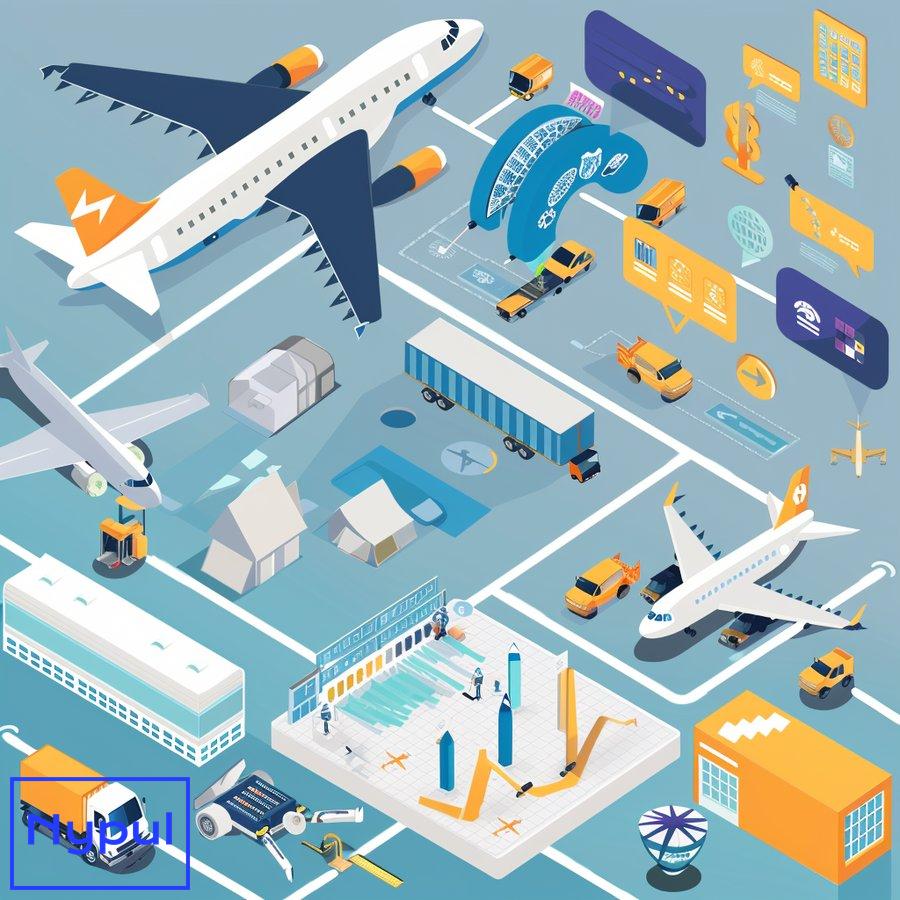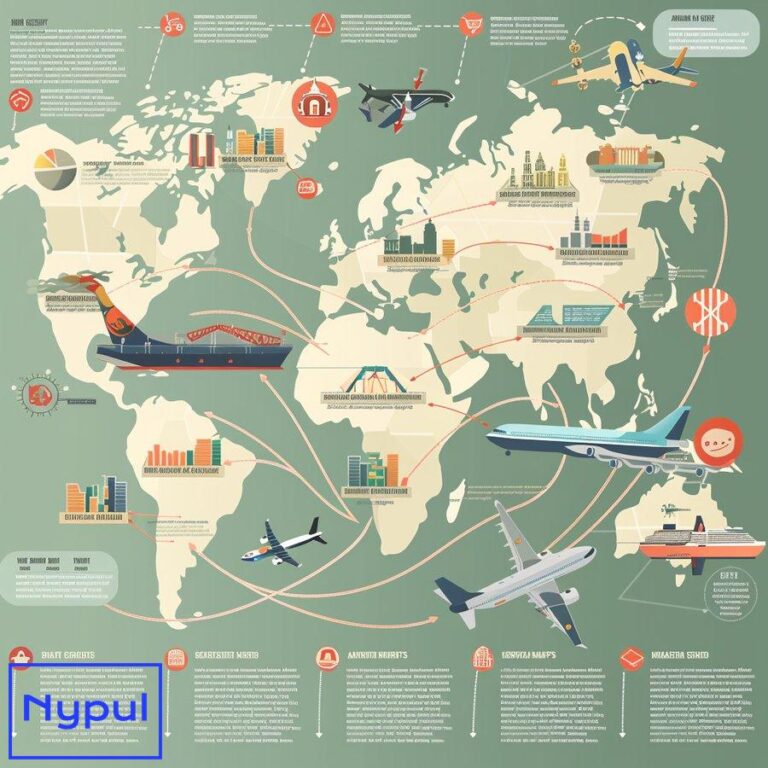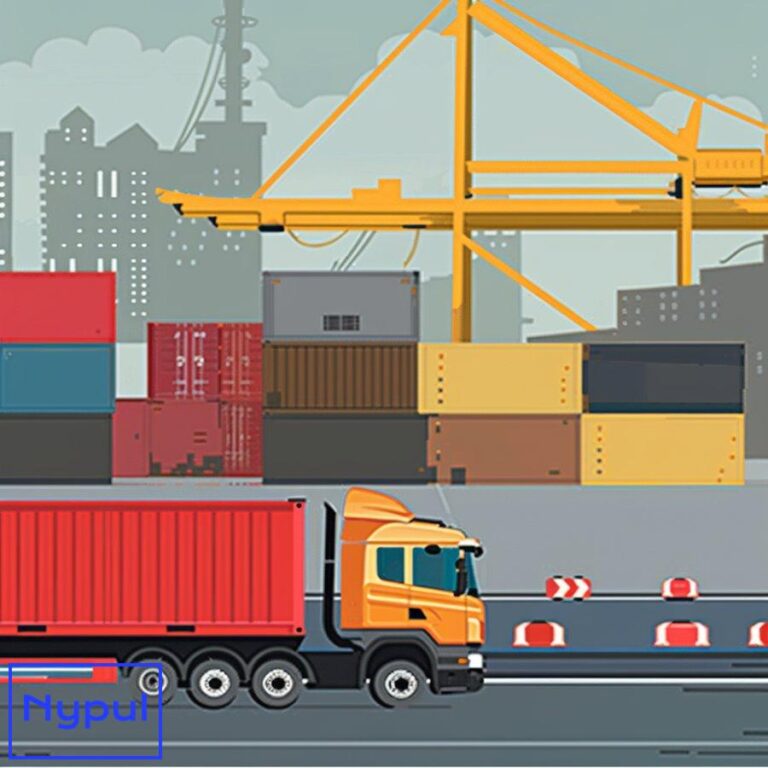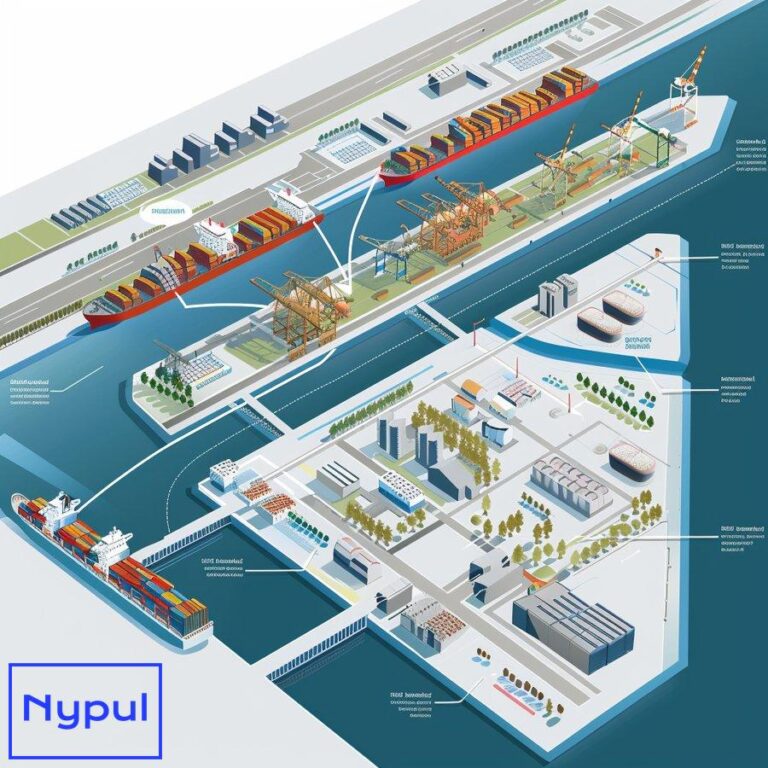What Is a TSA Approved Driver
Who are TSA Approved Drivers?
TSA Approved Drivers are professional commercial vehicle operators who have undergone rigorous screening and certification processes established by the Transportation Security Administration (TSA). These drivers play a crucial role in the transportation and logistics industry, particularly in handling sensitive cargo and accessing secure areas within airports and other high-security facilities.
TSA Approved Drivers possess a unique set of credentials that allow them to transport cargo to and from airports, seaports, and other restricted areas. They are entrusted with the responsibility of ensuring the safety and security of goods throughout the transportation process, making them an integral part of the supply chain security framework.
Key Characteristics of TSA Approved Drivers:
Specialized Training: TSA Approved Drivers receive extensive training in security protocols, threat recognition, and emergency response procedures. This training equips them with the knowledge and skills necessary to handle potential security risks effectively.
Security Clearance: These drivers undergo thorough background checks and security screenings to obtain the necessary clearance for accessing restricted areas. This process involves fingerprinting, criminal history checks, and verification of citizenship or legal residency status.
Compliance with Regulations: TSA Approved Drivers must adhere to strict regulations and guidelines set forth by the TSA and other relevant authorities. This includes maintaining up-to-date credentials, following specific security procedures, and participating in ongoing training and assessments.
Expertise in Secure Transportation: These drivers specialize in transporting sensitive or high-value cargo that requires enhanced security measures. They are well-versed in the handling of hazardous materials, valuable goods, and other items that demand extra precautions during transit.
The role of TSA Approved Drivers extends beyond mere transportation. They serve as a critical link in the security chain, acting as the first line of defense against potential threats to the cargo they transport. Their expertise and vigilance contribute significantly to maintaining the integrity of the supply chain and ensuring the safe movement of goods across various transportation modes.
TSA Approved Drivers often work for specialized logistics companies, freight forwarders, or as independent contractors. Their services are particularly valuable in industries that deal with sensitive or high-risk cargo, such as pharmaceuticals, electronics, aerospace components, and government shipments.
Understanding the unique position and responsibilities of TSA Approved Drivers is essential for businesses involved in international trade, air cargo operations, and supply chain management. These drivers represent a crucial component of the broader security infrastructure that safeguards the movement of goods in an increasingly complex and interconnected global economy.
What are the requirements to become a TSA Approved Driver?
Becoming a TSA Approved Driver involves meeting a comprehensive set of requirements designed to ensure the highest standards of security and professionalism in the transportation industry. These requirements encompass various aspects, including personal qualifications, professional experience, training, and security clearances.
![]()
Personal Qualifications
Age Requirement: Applicants must be at least 18 years old to be eligible for TSA approval. Some employers may require drivers to be 21 or older, especially for interstate transportation roles.
Citizenship or Legal Residency: TSA Approved Drivers must be either U.S. citizens or lawful permanent residents. This requirement is crucial due to the sensitive nature of the work and access to secure areas.
Physical Fitness: Candidates must meet specific physical requirements to ensure they can perform the duties of a commercial driver safely. This includes passing a Department of Transportation (DOT) physical examination.
Clean Driving Record: A clean driving record is essential. Applicants should have no major traffic violations or DUI convictions within a specified period, typically the past 3-5 years.
Professional Experience and Licensing
Commercial Driver’s License (CDL): A valid CDL is a fundamental requirement. Depending on the specific role, additional endorsements such as hazardous materials (HazMat) or air brakes may be necessary.
Driving Experience: Most positions require a minimum of 1-2 years of commercial driving experience. Some employers may prefer candidates with experience in specific types of cargo transportation.
Training and Certification
TSA Security Threat Assessment: This is a crucial step in the approval process. It involves a comprehensive background check to evaluate any potential security risks associated with the applicant.
Transportation Worker Identification Credential (TWIC): Many TSA Approved Driver positions require a TWIC card, which involves a separate application process and background check.
Hazardous Materials Endorsement (HME): For drivers transporting hazardous materials, an HME on their CDL is typically required. This involves additional testing and security screening.
Security Awareness Training: Candidates must complete TSA-approved security awareness training, which covers topics such as recognizing and responding to security threats.
Security Clearance and Background Checks
Criminal Background Check: A thorough criminal history check is conducted, including federal and state records. Any felony convictions or certain misdemeanors may disqualify an applicant.
Employment Verification: Past employment history is verified to ensure the accuracy of the information provided and to check for any security-related issues in previous roles.
Drug and Alcohol Screening: Regular drug and alcohol tests are required, both during the application process and throughout employment.
Fingerprinting: Applicants must submit to fingerprinting as part of the background check process.
Ongoing Requirements
Periodic Re-certification: TSA approval is not a one-time process. Drivers must undergo regular re-certification, typically every 2-5 years, depending on specific credentials.
Continuous Compliance: TSA Approved Drivers must maintain compliance with all relevant regulations and immediately report any changes in their status that might affect their eligibility.
Professional Development: Ongoing training and professional development are often required to stay updated on the latest security protocols and industry best practices.
The requirements to become a TSA Approved Driver are stringent and multifaceted. This rigorous process ensures that only the most qualified and trustworthy individuals are entrusted with the responsibility of transporting sensitive cargo and accessing secure areas. For aspiring drivers, meeting these requirements represents a significant professional achievement and opens doors to specialized roles within the transportation and logistics industry.
Companies seeking to employ TSA Approved Drivers should be well-versed in these requirements to ensure compliance and to effectively manage their workforce. Understanding these criteria is also crucial for shippers and logistics providers who rely on TSA Approved Drivers for secure transportation services.
How does the TSA Approval process work?
The TSA Approval process for drivers is a comprehensive and systematic procedure designed to ensure the highest levels of security in the transportation industry. This process involves multiple steps, various government agencies, and thorough evaluations to verify the eligibility and trustworthiness of applicants. Understanding this process is crucial for both aspiring drivers and companies involved in secure transportation operations.
Step 1: Initial Application

The process begins with the driver submitting an application for TSA approval. This typically involves:
Online Application: Candidates usually start by filling out an online application through the TSA’s official portal or a designated third-party service provider.
Basic Information Submission: Applicants must provide personal details, employment history, and other relevant information.
Document Verification: Initial submission of required documents, such as a valid Commercial Driver’s License (CDL) and proof of citizenship or legal residency.
Step 2: Preliminary Screening
Once the initial application is submitted, a preliminary screening takes place:
Document Review: TSA officials review the submitted documents for completeness and accuracy.
Initial Background Check: A basic background check is conducted to identify any immediate disqualifying factors.
Step 3: Fingerprinting and Biometric Data Collection
After passing the preliminary screening, applicants proceed to:
Fingerprinting Appointment: Schedule and attend a fingerprinting session at an approved facility.
Biometric Data Collection: Provide additional biometric data as required by the TSA.
Step 4: Comprehensive Background Check
This is one of the most critical phases of the approval process:
Criminal History Check: A thorough review of federal, state, and local criminal records.
Employment Verification: Confirmation of past employment history and professional conduct.
Immigration Status Verification: For non-U.S. citizens, verification of legal residency status.
Intelligence Database Check: Cross-referencing with various intelligence and security databases.
Step 5: Security Threat Assessment
The TSA conducts a detailed Security Threat Assessment (STA) which includes:
Risk Evaluation: Assessing any potential security risks associated with the applicant.
Terrorist Watchlist Check: Verifying that the applicant is not on any terrorist watchlists.
Behavioral Analysis: Evaluating any patterns or behaviors that might indicate a security risk.
Step 6: Training and Certification
Successful applicants must then complete required training:
Security Awareness Training: Comprehensive training on security protocols and threat recognition.
Specific Credential Training: Additional training for specific credentials like TWIC or HazMat endorsements.
Certification Exams: Passing required exams to demonstrate proficiency in security procedures.
Step 7: Final Review and Approval
The final stage involves:
Comprehensive File Review: A thorough review of all collected information, background check results, and training certifications.
Decision Making: TSA officials make the final determination on whether to grant approval.
Credential Issuance: If approved, the necessary credentials are issued to the driver.
Step 8: Ongoing Compliance and Renewal
TSA Approval is not a one-time process:
Periodic Reviews: Regular reviews of the driver’s status and compliance with TSA regulations.
Renewal Process: TSA Approval typically requires renewal every 2-5 years, involving a similar but often streamlined process.
Continuous Monitoring: Drivers are subject to continuous monitoring for any changes in their eligibility status.
Timeline and Variability
The duration of the TSA Approval process can vary significantly:
Standard Processing Time: Typically ranges from 2 to 6 weeks.
Factors Affecting Timeline: Complexity of background, completeness of application, current processing volumes.
Expedited Processing: Available in some cases, but usually at an additional cost.
Challenges and Considerations
Application Accuracy: Any discrepancies or inaccuracies in the application can significantly delay the process.
Disqualifying Factors: Certain criminal offenses or security concerns can lead to immediate disqualification.
Appeal Process: Applicants who are denied approval have the right to appeal the decision, which involves a separate procedure.
The TSA Approval process for drivers is rigorous and thorough, reflecting the critical nature of the role in maintaining transportation security. For drivers, successfully navigating this process represents a significant professional achievement and opens doors to specialized and often lucrative career opportunities. For employers and logistics companies, understanding this process is crucial for effective workforce planning and ensuring compliance with transportation security regulations.
This comprehensive approach to driver approval plays a vital role in safeguarding the integrity of the supply chain and maintaining public safety in an era of complex global logistics and ever-evolving security challenges.
Why are TSA Approved Drivers important in logistics?
TSA Approved Drivers play a pivotal role in the logistics industry, serving as a crucial link in the secure transportation chain. Their importance extends far beyond mere compliance with regulatory requirements; these drivers are integral to maintaining the integrity, efficiency, and security of global supply chains. Understanding the significance of TSA Approved Drivers is essential for businesses, logistics providers, and policymakers involved in the movement of goods, especially in high-security environments.

Enhancing Supply Chain Security
Threat Mitigation: TSA Approved Drivers are trained to recognize and respond to potential security threats, significantly reducing the risk of cargo theft, tampering, or infiltration by malicious actors.
Secure Handling of Sensitive Cargo: These drivers are entrusted with transporting high-value, sensitive, or potentially dangerous goods, ensuring that such items are handled with the utmost care and security throughout their journey.
Compliance with International Security Standards: The presence of TSA Approved Drivers helps companies meet international security standards, facilitating smoother cross-border transactions and global trade operations.
Access to Restricted Areas
Airport and Seaport Operations: TSA Approved Drivers have the necessary clearance to access secure areas within airports and seaports, enabling efficient cargo transfers between different modes of transportation.
Government and Military Facilities: For logistics operations involving government or military shipments, TSA Approved Drivers provide the level of security clearance necessary to enter and operate within restricted facilities.
Specialized Industrial Zones: Certain industrial areas with heightened security requirements rely on TSA Approved Drivers for safe and compliant transportation services.
Facilitating Efficient Logistics Operations
Streamlined Security Processes: The pre-approval status of these drivers often results in faster processing times at security checkpoints, reducing delays in the supply chain.
Intermodal Transportation Efficiency: TSA Approved Drivers facilitate smoother transitions between different modes of transport, particularly in air-to-ground or sea-to-ground cargo transfers.
Reduced Risk of Shipment Delays: The specialized training and clearance of these drivers minimize the risk of security-related delays or issues during transportation.
Enhancing Customer Confidence
Assurance of Cargo Integrity: Clients shipping high-value or sensitive goods have greater confidence in the security of their shipments when TSA Approved Drivers are involved.
Compliance with Client Security Requirements: Many clients, especially in industries like pharmaceuticals, aerospace, or electronics, specifically require TSA Approved Drivers as part of their security protocols.
Reputation Management: Utilizing TSA Approved Drivers enhances a company’s reputation for security and reliability in the logistics market.
Supporting Regulatory Compliance
Meeting Federal Security Mandates: TSA Approved Drivers help logistics companies comply with various federal security mandates, including those set by the Department of Homeland Security.
Facilitating International Trade Compliance: These drivers play a role in meeting international security standards, such as those required for C-TPAT (Customs-Trade Partnership Against Terrorism) certification.
Adapting to Evolving Security Landscapes: The ongoing training and certification of TSA Approved Drivers ensure that logistics operations remain compliant with evolving security regulations.
Risk Management and Insurance Considerations
Reduced Insurance Premiums: The use of TSA Approved Drivers can lead to reduced insurance premiums for logistics companies due to the lower risk profile associated with these certified professionals.
Enhanced Risk Mitigation Strategies: These drivers form a key component of comprehensive risk management strategies in logistics operations.
Incident Response and Reporting: TSA Approved Drivers are trained in proper incident response and reporting procedures, crucial for managing and mitigating risks in real-time.
Specialized Industry Applications
Pharmaceutical Logistics: In the transportation of sensitive medical supplies and pharmaceuticals, TSA Approved Drivers ensure compliance with stringent security and temperature control requirements.
Aerospace and Defense: For the movement of critical aerospace components or defense-related items, these drivers provide the necessary security clearance and handling expertise.
High-Value Electronics: The transportation of expensive electronic components or finished products often requires the enhanced security provided by TSA Approved Drivers.
Contribution to National Security
Supporting Counter-Terrorism Efforts: TSA Approved Drivers act as an additional layer in national security efforts, helping to prevent the use of commercial transportation for terrorist activities.
Critical Infrastructure Protection: By securing the transportation of essential goods, these drivers contribute to the protection of critical national infrastructure.
Intelligence Gathering and Reporting: Trained to be vigilant, TSA Approved Drivers can serve as valuable sources of intelligence for security agencies, reporting suspicious activities or potential threats.
The importance of TSA Approved Drivers in logistics cannot be overstated. They are not just drivers; they are security professionals who play a critical role in maintaining the safety, efficiency, and integrity of global supply chains. Their specialized training, security clearance, and expertise in handling sensitive cargo make them indispensable in an era where security threats are ever-present and evolving.
For businesses involved in logistics, particularly those dealing with high-value, sensitive, or regulated goods, incorporating TSA Approved Drivers into their operations is not just a compliance measure but a strategic decision. It enhances operational efficiency, builds customer trust, and provides a competitive edge in the complex world of modern logistics.
As global trade continues to grow in complexity and volume, the role of TSA Approved Drivers is likely to become even more crucial. Their ability to navigate the intricate web of security regulations while ensuring the smooth flow of goods positions them as key players in the future of secure and efficient logistics operations.
What are the benefits of being a TSA Approved Driver?
Becoming a TSA Approved Driver offers numerous benefits that extend beyond the realm of standard commercial driving. These advantages encompass career opportunities, financial rewards, professional development, and personal satisfaction. Understanding these benefits is crucial for drivers considering this career path and for companies looking to attract and retain top talent in the logistics and transportation industry.
Enhanced Career Opportunities
Access to Specialized Jobs: TSA Approved Drivers are eligible for positions that require high-level security clearance, opening doors to roles in sensitive industries such as aerospace, defense, and government logistics.
Job Security: The specialized nature of TSA approval often leads to greater job security, as these drivers are in high demand across various sectors.
Career Advancement: The certification can serve as a stepping stone to higher positions within the transportation and logistics industry, such as security managementCareer Advancement: The certification can serve as a stepping stone to higher positions within the transportation and logistics industry, such as security management roles, logistics coordination, or even executive positions in supply chain management.
Diverse Employment Options: TSA Approved Drivers can work for a variety of employers, including freight carriers, logistics companies, government agencies, and private contractors, allowing for flexibility in career choices.
Financial Benefits
Competitive Salaries: TSA Approved Drivers often command higher wages than their non-certified counterparts due to the specialized nature of their work and the security risks involved.
Overtime and Incentives: Many positions offer overtime pay, bonuses, and other financial incentives, particularly for drivers willing to work in high-demand areas or during peak shipping seasons.
Job Benefits: In addition to competitive salaries, many employers offer comprehensive benefits packages, including health insurance, retirement plans, and paid time off.
Professional Development and Training
Ongoing Training Opportunities: TSA Approved Drivers receive continuous training in security protocols, industry regulations, and best practices, enhancing their skills and knowledge.
Certification Renewal: The requirement for periodic re-certification encourages drivers to stay current with industry standards and security measures, which can be beneficial for career growth.
Networking Opportunities: Being part of a specialized group of professionals allows TSA Approved Drivers to network with industry leaders, attend conferences, and participate in workshops, further enhancing their career prospects.
Personal Satisfaction and Responsibility
Sense of Accomplishment: Achieving TSA Approved Driver status is a significant accomplishment that reflects a commitment to security and professionalism in the transportation industry.
Contribution to National Security: Many drivers take pride in knowing that their work contributes to national security efforts by ensuring the safe transport of sensitive cargo and preventing potential threats.
Job Satisfaction: The combination of job security, competitive pay, and the importance of their role in the logistics chain leads to higher job satisfaction among TSA Approved Drivers.
Increased Trust and Credibility
Enhanced Reputation: Being a TSA Approved Driver enhances an individual’s reputation within the industry, signaling to employers and clients that they are committed to maintaining high security and safety standards.
Client Confidence: Companies that employ TSA Approved Drivers can assure clients that their shipments are in safe hands, leading to increased business opportunities and client loyalty.
Regulatory Compliance: TSA Approved Drivers help companies meet stringent regulatory requirements, reducing the risk of fines or legal issues related to cargo security.
Flexibility and Independence
Varied Work Environments: TSA Approved Drivers may have the opportunity to work in diverse environments, including airports, seaports, and industrial facilities, keeping the job interesting and dynamic.
Independent Work: Many TSA Approved Drivers work as independent contractors, providing them with the flexibility to choose their assignments and set their schedules.
Potential for Specialization: Drivers can choose to specialize in specific types of cargo, such as hazardous materials or high-value electronics, allowing them to develop niche expertise.
The benefits of being a TSA Approved Driver are substantial and multifaceted. From enhanced career opportunities and financial rewards to personal satisfaction and a sense of responsibility, this role offers a unique and fulfilling career path. For companies, employing TSA Approved Drivers not only ensures compliance with security regulations but also enhances their reputation and builds client trust.
As the logistics industry continues to evolve, the demand for TSA Approved Drivers is likely to grow, making this an opportune time for individuals to pursue this rewarding career. The combination of job security, competitive compensation, and the opportunity to contribute to national security makes becoming a TSA Approved Driver an attractive option for those looking to make a meaningful impact in the transportation sector.
How do TSA Approved Drivers differ from other certified drivers?
TSA Approved Drivers distinguish themselves from other certified drivers through their specialized training, security clearance, and the unique responsibilities they bear in the transportation and logistics industry. Understanding these differences is essential for businesses, logistics providers, and drivers themselves as they navigate the complexities of cargo transportation and security requirements.
Security Clearance and Training
Background Checks: TSA Approved Drivers undergo comprehensive background checks, including criminal history evaluations and security threat assessments, which are more rigorous than those required for standard commercial drivers.
Specialized Security Training: While all commercial drivers receive training related to safe driving practices, TSA Approved Drivers participate in extensive security training that covers threat recognition, emergency response, and compliance with TSA regulations.
Certification Requirements: TSA Approved Drivers must obtain specific certifications, such as the Transportation Worker Identification Credential (TWIC) and, in some cases, a Hazardous Materials Endorsement (HME), which are not typically required for other types of commercial drivers.
Access to Restricted Areas
Authorized Access: TSA Approved Drivers are granted access to secure areas within airports, seaports, and other high-security facilities, enabling them to handle sensitive cargo that other drivers cannot access.
Compliance with Security Protocols: These drivers are trained to follow strict security protocols when entering and operating in restricted areas, ensuring the safety and integrity of the cargo they transport.
Role in National Security
Counter-Terrorism Efforts: TSA Approved Drivers play a vital role in national security by preventing the transportation of dangerous materials and ensuring that sensitive cargo is handled securely.
Intelligence Gathering: These drivers are often trained to report suspicious activities or potential threats, serving as an additional layer of security in the logistics chain.
Specialized Cargo Handling
High-Value and Sensitive Cargo: TSA Approved Drivers are often tasked with transporting high-value goods, pharmaceuticals, and other sensitive items that require enhanced security measures.
Hazardous Materials: Many TSA Approved Drivers are trained to handle hazardous materials, ensuring compliance with safety regulations and proper handling procedures.
Operational Responsibilities
Security Protocol Compliance: TSA Approved Drivers are required to adhere to specific security protocols and procedures that are not typically mandated for other commercial drivers.
Incident Reporting: These drivers are trained to follow detailed incident reporting procedures in the event of a security breach or suspicious activity, which is not a standard requirement for all drivers.
Professional Development and Continuous Training
Ongoing Training Requirements: TSA Approved Drivers must participate in regular training and re-certification processes to maintain their approval status, whereas other certified drivers may not have such stringent requirements.
Networking and Industry Engagement: TSA Approved Drivers often have access to specialized training programs, workshops, and industry events focused on security and logistics, providing them with opportunities for professional development that other drivers may not experience.
Regulatory Compliance
Meeting Federal Standards: TSA Approved Drivers must comply with federal security mandates and regulations that govern the transportation of sensitive cargo, which sets them apart from standard commercial drivers.
Enhanced Liability and Insurance Considerations: The involvement of TSA Approved Drivers may lead to different liability and insurance requirements for companies, reflecting the higher stakes associated with their roles.
Conclusion
The differences between TSA Approved Drivers and other certified drivers are significant and reflect the specialized nature of their work in the logistics industry. From rigorous security training and background checks to access to restricted areas and responsibilities in national security, TSA Approved Drivers occupy a unique position within the transportation sector.
For businesses operating in high-security environments or dealing with sensitive cargo, employing TSA Approved Drivers is essential for ensuring compliance with security regulations and maintaining the integrity of the supply chain. Understanding these differences is crucial for companies as they navigate the complexities of logistics and transportation security.
What challenges do TSA Approved Drivers face?
TSA Approved Drivers encounter a variety of challenges in their roles, stemming from the nature of their work, the regulatory environment, and the demands of the logistics industry. Recognizing these challenges is essential for drivers, employers, and stakeholders in the transportation sector to develop strategies for overcoming them and ensuring the smooth operation of secure cargo transport.
Regulatory Compliance and Bureaucracy
Complex Regulations: TSA Approved Drivers must navigate a complex web of federal, state, and local regulations governing transportation security, which can be challenging to interpret and comply with.
Frequent Changes in Regulations: The regulatory landscape is subject to frequent changes, requiring drivers to stay informed and adapt to new requirements, which can be time-consuming and demanding.
Bureaucratic Delays: The approval process and ongoing compliance requirements can involve significant bureaucratic hurdles, leading to delays in obtaining necessary credentials or permits.
Security Threats and Risks
Increased Security Threats: The nature of their work exposes TSA Approved Drivers to potential security threats, including cargo theft, terrorism, and other criminal activities.
Vigilance and Preparedness: Drivers must maintain a high level of vigilance and preparedness to respond to potential threats, which can be mentally and emotionally taxing.
Incident Response: In the event of a security incident, drivers are responsible for following detailed protocols, which can be stressful and challenging to manage in high-pressure situations.
Physical and Mental Demands
Long Hours and Irregular Schedules: TSA Approved Drivers often work long hours, including nights, weekends, and holidays, which can lead to fatigue and work-life balance challenges.
Physical Strain: The job may require heavy lifting, loading, and unloading cargo, leading to physical strain and potential injuries if proper safety protocols are not followed.
Mental Stress: The combination of high-stakes responsibilities, long hours, and the need for constant vigilance can contribute to mental stress and burnout.
Technological Challenges
Adapting to New Technologies: The logistics industry is increasingly adopting new technologies, such as tracking systems and automated processes, which require drivers to continually adapt and learn.
Cybersecurity Concerns: As logistics operations become more digitized, TSA Approved Drivers must also be aware of cybersecurity threats that could compromise the security of cargo and transportation systems.
Workforce Shortages
Driver Shortages: The transportation industry is facing a shortage of qualified drivers, which can lead to increased workloads and pressure on existing TSA Approved Drivers.
Competition for Talent: Companies may struggle to attract and retain TSA Approved Drivers due to the demanding nature of the job and the competitive landscape for skilled professionals.
Employer Expectations and Accountability
High Expectations from Employers: Employers often have high expectations for TSA Approved Drivers, requiring them to maintain impeccable records, adhere to strict schedules, and manage complex logistics.
Accountability for Security Incidents: Drivers are held accountable for any security incidents that occur during their transport operations, which can lead to job insecurity and stress.
Conclusion
TSA Approved Drivers face a range of challenges that stem from the demanding nature of their work, the regulatory environment, and the evolving landscape of the logistics industry. From navigating complex regulations and security threats to managing physical and mental demands, these drivers must be equipped with the skills and resilience to overcome these obstacles.
For employers, understanding these challenges is crucial for developing supportive policies and practices that promote the well-being and effectiveness of TSA Approved Drivers. By addressing these issues, companies can enhance driver satisfaction, improve retention rates, and ensure the secure and efficient transportation of goods.
How can companies utilize TSA Approved Drivers effectively?
Companies can maximize the value of TSA Approved Drivers by implementing strategic practices that enhance their roles within the logistics and transportation framework. These practices focus on optimizing operations, ensuring compliance, and fostering a supportive work environment. Understanding how to effectively utilize TSA Approved Drivers is essential for businesses operating in high-security environments or dealing with sensitive cargo.
Strategic Recruitment and Onboarding

Targeted Recruitment Efforts: Companies should focus on recruiting TSA Approved Drivers with the right qualifications and experience, utilizing specialized job boards and industry networks to attract top talent.
Comprehensive Onboarding Programs: Implementing thorough onboarding programs that familiarize new drivers with company policies, security protocols, and operational procedures can enhance their effectiveness from day one.
Mentorship and Support: Pairing new TSA Approved Drivers with experienced mentors can provide valuable guidance and support, helping them navigate the complexities of their roles.
Ongoing Training and Development
Regular Training Sessions: Companies should invest in regular training sessions that cover security protocols, regulatory updates, and industry best practices, ensuring that drivers remain informed and skilled.
Cross-Training Opportunities: Providing cross-training opportunities allows TSA Approved Drivers to gain insights into other areas of the business, fostering a more comprehensive understanding of logistics operations.
Professional Development Programs: Encouraging participation in industry conferences, workshops, and certification programs can help drivers enhance their skills and advance their careers.
Effective Communication and Collaboration
Open Communication Channels: Establishing open lines of communication between drivers and management fosters a collaborative environment where concerns and suggestions can be addressed promptly.
Team Collaboration: Encouraging collaboration among TSA Approved Drivers and other team members can lead to improved problem-solving and operational efficiency.
Feedback Mechanisms: Implementing regular feedback mechanisms allows drivers to share their experiences and insights, contributing to continuous improvement in processes and practices.
Utilizing Technology and Tools
Advanced Tracking Systems: Implementing advanced tracking and logistics management systems can enhance the efficiency of TSA Approved Drivers, allowing for real-time updates and improved route planning.
Mobile Applications: Providing drivers with mobile applications that streamline communication, reporting, and documentation can enhance their productivity and reduce administrative burdens.
Cybersecurity Training: As technology plays an increasingly vital role in logistics, offering cybersecurity training ensures that TSA Approved Drivers are equipped to handle potential threats.
Promoting Work-Life Balance
Flexible Scheduling Options: Offering flexible scheduling options can help TSA Approved Drivers manage their work-life balance, reducing stress and improving job satisfaction.
Mental Health Support: Providing access to mental health resources and support programs can help drivers cope with the emotional demands of their roles.
Recognition and Reward Programs: Implementing recognition and reward programs for outstanding performance can boost morale and motivate TSA Approved Drivers to excel in their work.
Ensuring Compliance and Accountability
Regular Compliance Audits: Conducting regular compliance audits ensures that TSA Approved Drivers adhere to security protocols and regulatory requirements, minimizing the risk of violations.
Incident Reporting Procedures: Establishing clear incident reporting procedures empowers drivers to respond effectively to security threats and ensures accountability within the organization.
Performance Metrics: Utilizing performance metrics to evaluate the effectiveness of TSA Approved Drivers can help identify areas for improvement and recognize exceptional contributions.
Conclusion
Effectively utilizing TSA Approved Drivers requires a multifaceted approach that encompasses strategic recruitment, ongoing training, communication, technology integration, work-life balance, and compliance. By implementing these practices, companies can enhance the roles of TSA Approved Drivers within their logistics operations, ensuring the secure and efficient transportation of sensitive cargo.
As the demand for TSA Approved Drivers continues to grow, businesses that prioritize the development and support of these professionals will be better positioned to navigate the complexities of the logistics industry and maintain the highest standards of security and compliance.






